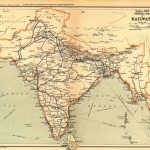
by Rachel Collishaw, Ottawa-Carleton DSB
This is the timeline that my CHC2D class created over the semester last year. I was so excited when we actually “finished” the course from 1914 to the present that I tweeted out a picture of the evidence.

Why is covering 100 years of history in one country so hard?
How am I able to cover many more civilizations and many thousands more years in my Ancient Civilizations class, while coverage of one century eludes me and many others consistently?
The only other time I “finished” the grade 10 history course was early on in my career, maybe 12 years ago. I had a lovely group of students who got through the lectures, note-taking and tests and activities quickly because they were compliant and pretty bright. That was once.
This time was different. I had a very average group of grade 10 students but we managed to cover the entire century and have not a single test, only a few lectures and the note-taking was mostly in the service of inquiry. Students connected the course to their own lives and debated each other willingly (even sometimes, after the bell!) on topics in Canadian history.
It often felt like a herculean task, and there were certainly many layers to it, but I’ll share two strategies that I think had an important influence on covering the whole century.
Strategy #1: Good essential questions
I used three course-level questions that came out of amazing collaborative work on the new e-learning courses for CHC2D and CHC2P with Sarah Murdoch and many other amazing educators.
• Is Canada a country you can be proud of?
• Is Canada a better place now than it was before?
• How is Canada’s story, my story?
At the end of every unit, students selected events related to these questions to put up on the timeline. Debates were loud and impassioned as students championed their people, events, and developments and defended their historical significance. A particularly lively debate was whether the invention of cell phones was actually significant. Most students felt it was not historically significant until we put it into the “my story” question category, and then, it was REALLY significant. This showed me one dimension of the value of having more than one question.
Strategy #2: Student Voice
While student voice is clearly built into the timeline activity, it was also built into almost every activity in the class. Students selected document sets, dove deep into issues, and then shared their conclusions with their peers.
We did a LOT of creative variations of the jigsaw, gallery walk, class fair, speed dating, and more! This made space for meaningful sharing and dialogue. What this gave me was lots of content coverage but in a shallow-deep way. Students had a deep understanding of their own topics and a glancing understanding of their peers’ topics, and some experience in talking about many topics.
I’m now in an instructional coach role and not directly in the classroom. When I actually finished the course with my students, I felt like I was finishing the course for myself also.
As with any ending, it’s also just a beginning. For my students, the course is a launching pad for further history courses or just for more learning and questioning on their path to citizenship and understanding of the world and their place in it. For me, I look forward to supporting teachers on their own journeys to whatever “finishing” looks like to them.
If you have thoughts about covering the century, please share them with me on email or twitter @rcollishaw


